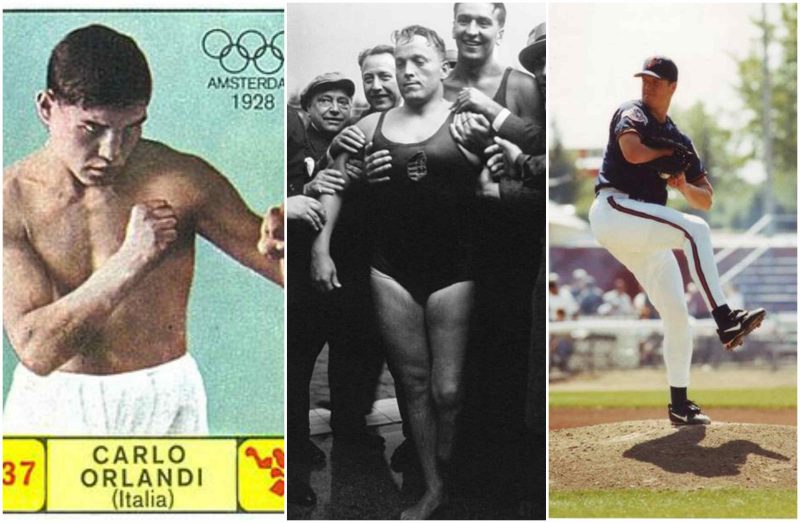George Eyser
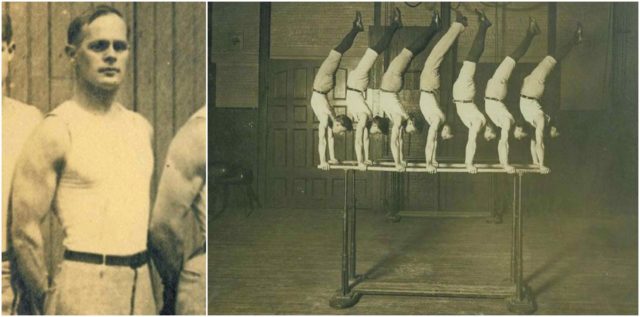
Eyser won six medals in the 1904 Olympics in St. Louis, including three gold medals. He had only one flesh-and-blood leg. The other was amputated below the knee and terminated in a wooden prosthetic during his childhood. Eyser competed in both sets and did poorly in the first one. performed much better in the second competition set.
On a single day of October 29, he won 6 medals in total, of which 3 were gold (parallel bars, long horse vault, and 25-foot rope climbing), two silver (pommel horse and 4-event all-around), and one bronze (horizontal bar). A bookkeeper by trade, he would continue performing at high-level gymnastics competitions until at least 1909.
Carlo Orlandi
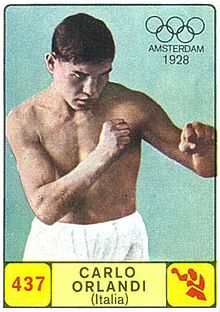
Italian boxer Carlo Orlandi set a precedent for deaf Olympians at the 1928 Amsterdam games, winning four straight fights to take home gold in the lightweight division. In 1929 he turned professional, and in the 1930s held both the Italian and European lightweight titles. He then won the Italian welterweight title in 1941 and retired in 1944. He was a deaf-mute.
Oliver Halassy
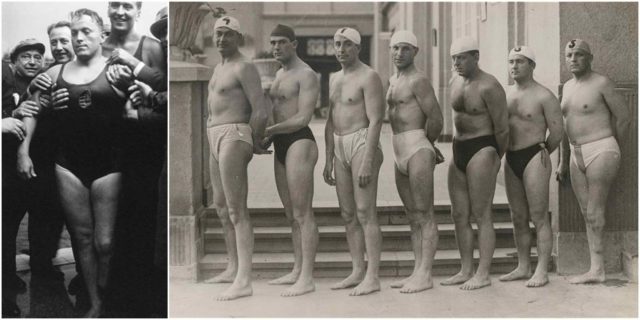
Following a childhood streetcar accident reminiscent of Eyser’s, Oliver Halassy had his left leg amputated below the knee. He nonetheless became a mainstay of the powerhouse Hungarian water polo team, collecting a silver medal at the 1928 Olympics and then back-to-back golds in 1932 and 1936. He also became European champion in 1500 metres freestyle swimming in 1931, just hours after he helped his water polo team to victory.
Nationally he won 25 swimming titles and set 12 records. Halassy was married and had three children. After retiring from competitions he worked as an auditor in his City Hall. He was killed by a Soviet soldier after a robbery near his home in Budapest.
Karoly Takacs
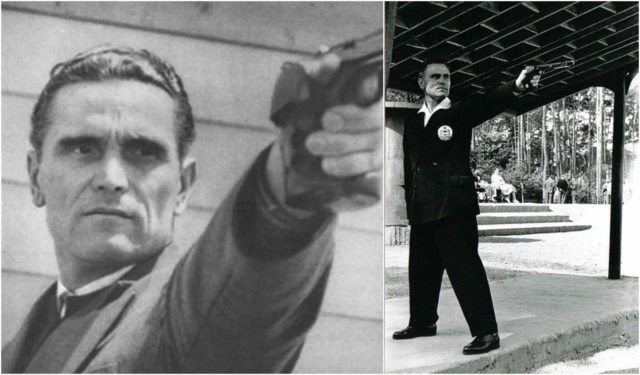
Another Hungarian, army sergeant Karoly Takacs, was one of the world’s top pistol shooters until a defective grenade exploded during a training exercise and permanently mutilated his right hand. Undaunted, he painstakingly learned to shoot equally well with his left, surprising everyone — who thought he had only shown up to watch — by winning the Hungarian national pistol shooting championship in 1939, just a year after the accident.
Takacs remained in top form even as the next two Olympics were cancelled due to World War II. When the games resumed in 1948, he set a world record and claimed gold in the rapid-fire pistol event. He then followed that up with a second gold medal at the 1952 games prior to finishing eighth at his final Olympics in 1956.
Lis Hartel
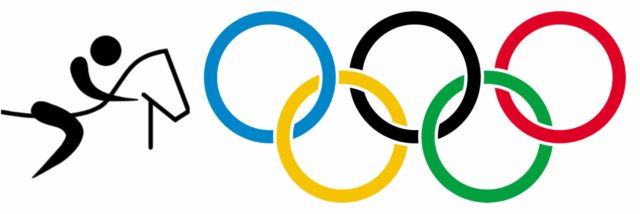
She was the Danish dressage champion in 1943 and 1944. In September 1944 at age 23 she contracted polio, which permanently paralyzed her below the knees, as well as affecting her arms and hands. She was pregnant at the time but had a healthy daughter.
Hartel was determined to continue her equestrian career despite medical advice advising her otherwise, and although she had to be helped onto her horse when she rode in 1947 – the first time women were allowed to compete in the equestrian dressage event – she finished second at the Scandinavian championships, narrowly losing out to Henri Saint Cyr of Sweden. In one of the Olympics’ most famous acts of sportsmanship, the impressed Saint Cyr lifted her from her horse to the podium for the medal ceremony. Four years later, Hartel picked up a second silver, once again falling just short to Saint Cyr.
Neroli Fairhall
Born in Christchurch in 1944, Fairhall took up archery following a motorbike accident which paralysed her from the waist down, ending her previous athletic career. She was able to compete in the 1984 Los Angeles Olympic Games, shooting for New Zealand and finishing in 35th place.
Fairhall was the first paraplegic to compete in the Olympic Games. Fairhall won gold when archery was first introduced to the Commonwealth Games in Brisbane in 1982. Several other wheelchair-bound athletes have since followed her lead, including Sonia Vettenburg, a Belgian pistol shooter at the 1992 Barcelona Olympics; Paola Fantato, an Italian archer at the 1996 Atlanta Olympics; and Zahra Nemati, the Iranian archer who will be in Rio.
Jeff Float
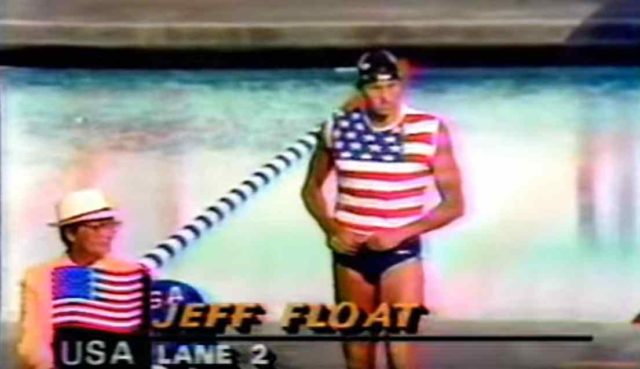
At 13 months of age, Float lost most of his hearing and nearly his life to viral meningitis. As a result, he is 90% deaf in his right ear and 65% in the left, thus becoming the first legally deaf athlete from the United States to win an Olympic Gold Medal. He qualified for the 1980 U.S. Olympic Swimming Team in three individual events, but could not participate when the United States boycotted the Moscow 1980 Summer Olympic Games.
Four years later, he competed at the 1984 Summer Olympics in Los Angeles. As the peer-elected Team Captain, Jeff earned a Gold Medal in the men’s 4×200-meter freestyle relay and finished fourth in the individual 200-meter freestyle event. That Gold Medal 4×200-meter freestyle is now considered the third greatest relays of all time.
Jim Abbott
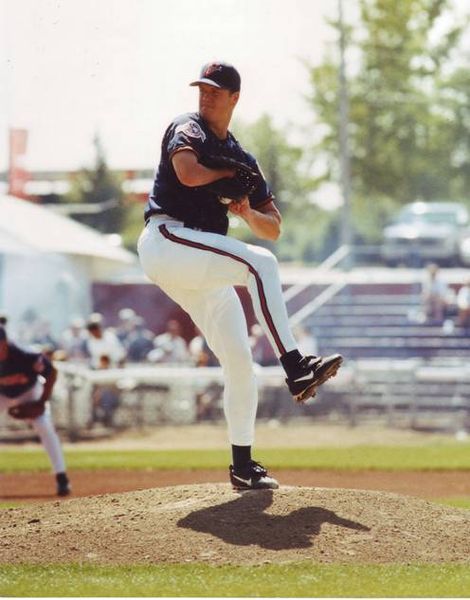
Though born without a right hand, pitcher Jim Abbott was chosen to represent the U.S. baseball team at the 1988 Seoul Olympics following an outstanding junior year at the University of Michigan. In the final game of the demonstration tournament — baseball would not become an official Olympic sport until four years later — he propelled his side to gold, hurling all nine innings in a 5-3 victory over Japan.
From there, Abbott went on to have a 10-year career in the major leagues, compiling 87 wins and a 4.25 ERA and pitching a no-hitter in 1993. He even showed some skill with the bat, lining a triple during a 1991 spring training game and going 2-for-21 during his one season in the National League.
Marla Runyan
Marla Runyan is an American track and field athlete, road runner and marathon runner who is legally blind. She is a three-time national champion in the women’s 5000 meters. Runyan won four gold medals at the 1992 Summer Paralympics in the long jump and the 100, 200, and 400-meter races. She also competed in cycling at those games. She attempted to qualify for the “Able Bodied” Olympics at the 1996 U.S. Olympic Trials, finishing 10th in the Heptathlon.
While failing to qualify, she ran the 800 meters in 2:04.60, the Heptathlon record. Her career as a world-class runner in able-bodied events began in 1999 at the Pan American Games, where she won the 1,500-meter race. The next year, she placed eighth in the 1,500-meter in the 2000 Sydney Olympics, making Runyan the first legally blind athlete to compete in the Olympics and the highest finish by an American woman in that event.
Natalie du Toit
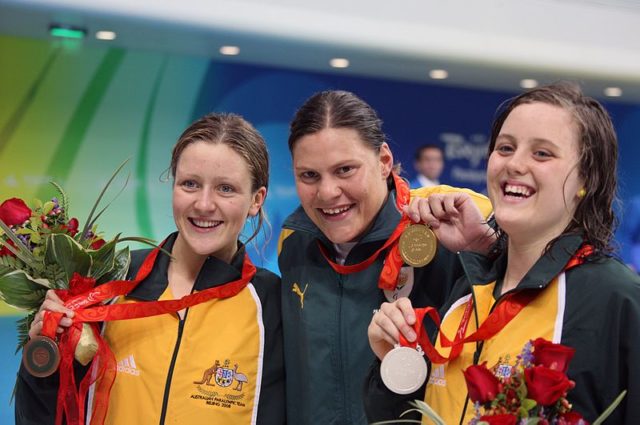
At age 17, having just missed qualifying for the 2000 Olympics, South African swimmer Natalie du Toit was struck by a car as she rode her motorbike from practice to school. The accident ripped apart the bones and muscles in her left leg, which had to be amputated at the knee.
Back in the pool a few months later, she reportedly couldn’t swim more than a couple dozen yards without tiring. But she steadfastly progressed, winning several medals at the 2004 Paralympics and then securing a coveted spot at the 2008 Beijing Olympics in the so-called marathon swim (a 6.2-mile slog through open water). Racing against able-bodied opponents without the aid of a prosthetic, she finished 16th out of 24 competitors.
Oscar Pistorius
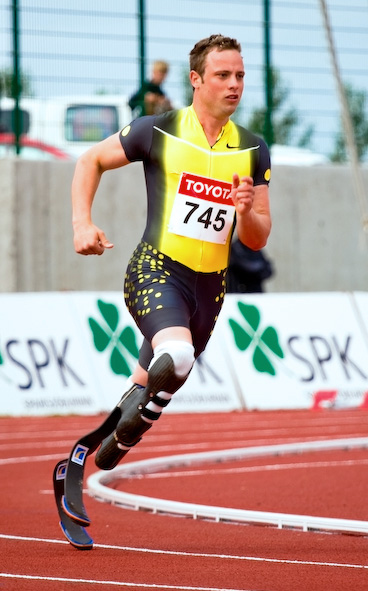
Nicknamed “Blade Runner,” double amputee Oscar Pistorius gained widespread fame at the 2012 London Olympics, riding his carbon-fiber artificial legs into the semifinals of the men’s 400-meter race. (He also ran in the 4×400 relay.) The South African’s feel-good story took a sharp turn for the worse, however, when he was convicted in the 2013 killing of his model girlfriend.
